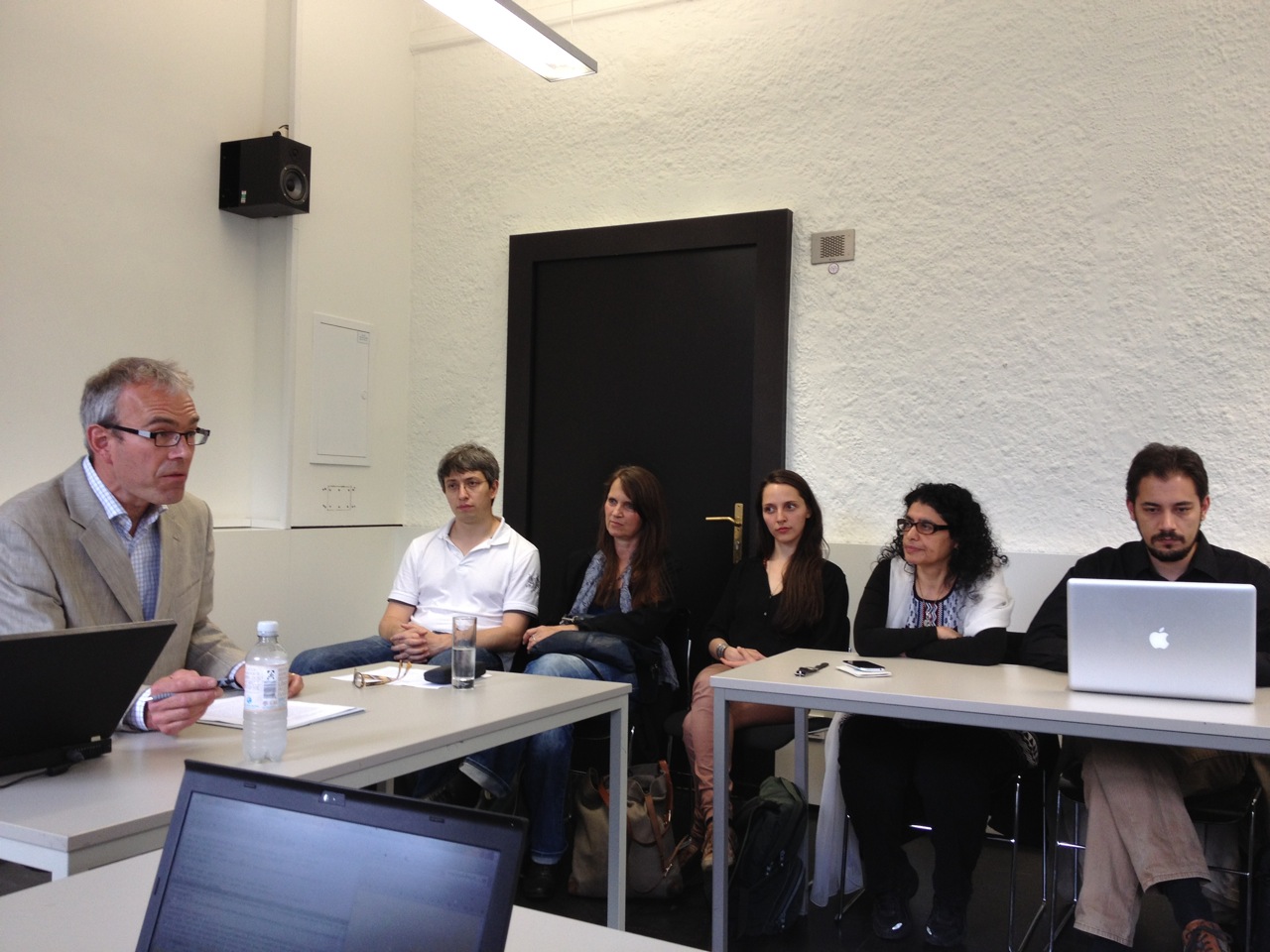Dr. Ulrich Pagel: “Buddhist Monks in Tax Disputes: Monastic Attitudes towards Revenue Collection”
3 July 2013

Photo: Orna Almogi
This investigation produces a discussion of the tax liabilities of the Saṅgha and the strategies it devised to minimize exposure to customs demands. To put its fiscal obligations into context, I introduce, in brief, the principles that governed revenue collection in India and discuss what we know about their application. Most of this derives from the Arthaśāstra (KA) and Mānava Dharmaśāstra as well as a handful of epigraphic sources. Since Buddhism was but one of many religious traditions vying for state privileges, the Saṅgha is never singled out in the political manuals that advise the king on tax policy. Many sources subsume the Buddha’s monks in one (or more) of the classic genres of Indian religious practitioners and so deny them a distinct status in law. Naturally enough, Buddhist sources tend to be more specific and describe the tax obligations of the monks in some detail. Most of this is included in the Vinayavibhaṅga of the Mūlasarvāstivāda vinaya which recounts a series of incidents connected with customs inspections.
Buddhist attitudes towards taxation are also recorded in the Pāli vinaya, in the Jātakas and in Buddhist narrative literature, though most refer to revenue issues only in passing. Even the Mūlasarvāstivāda vinaya does not yield sufficient material to draw a coherent picture of the Saṅgha’s tax liabilities overall, but it contains enough to piece together the Buddhists’ principal objections and the strategies they adopted to escape payment. Over time, these early attempts at tax avoidance developed into a more systematic response to redress the perceived bias in the law. It is easy to see why an organization that depended for much of its start-up capital on the generosity of lay supporters would submit such a motion. This demand, alongside several other requests for legislative amendments, surfaces already in the Vinayavibhaṅga but was fully articulated only in the vinaya commentaries in a period when the Saṅgha had grown into a significant economic force in many parts of central and northern India. Much of the exegesis is indexed to events described in the monastic code itself and draws on early Indian legal sources that retained authority well into the colonial age. I bring together the results of these intertwined investigations in the final section where I seek to add to the recent debate of the status ofBuddhist monks in ancient Indian society. The Saṅgha’s revenue coding and its calls for reform, coupled with the state’s strict enforcement to contain repeat offending, shows that the royal treasury had reason to worry about the monks’ attitude towards duty collection. A person’s tax return might not tell us much about his character, but it sure lays bare his financial circumstances and civil rank. I conclude with a discussion of the standing of the Buddha’s followers by juxtaposing their rights and privileges with those enjoyed by contemporary Hindu ascetics. In the domain of taxation, for one, the Buddhists stood at a clear disadvantage since they remained liable to a number of taxes that had long been waived for their Hindu peers.
- Click here to download the invitation (PDF)
July 3rd, 2013 - 18.00h
Universität Hamburg, Hauptgebäude,
Edmund-Siemers-Allee 1, Raum 118
Free Entrance.
 |
 |
